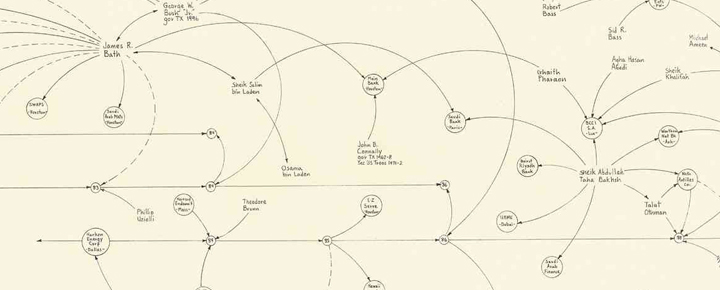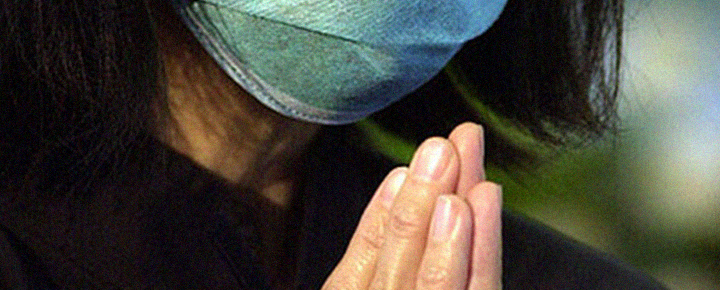An edited version of this essay appears today as an Op-Ed in the New York Times:
For decades, people who concern themselves with the world’s “wicked problems” — interconnected issues like environmental degradation, poverty, food security and climate change — have marched together under the banner of “sustainability”: the idea that with the right mix of incentives, technology substitutions and social change, humanity might finally achieve a lasting equilibrium with our planet, and with each other.
It’s an alluring and moral vision, and in a year that has brought us the single hottest month in recorded American history (July), a Midwestern drought that plunged more than half the country into a state of emergency, a heatwave across the eastern part of the country powerful enough to melt the tarmac below jetliners in Washington and, most recently, the ravages of Hurricane Sandy, it would seem a pressing one, too.
Yet today, precisely because the world is so increasingly out of balance, the sustainability regime is being quietly challenged, not from without, but from within. Among a growing number of scientists, social innovators, community leaders, NGOs, philanthropies, governments and corporations, a new, complementary dialogue is emerging around a new idea, resilience: how to help vulnerable people, organizations and systems persist, perhaps even thrive, amid unforeseeable disruptions. Where sustainability aims to put the world back into balance, resilience looks for ways to manage an imbalanced world.
It’s a broad-spectrum agenda, which, at one end, seeks to imbue our communities, institutions and infrastructure with greater flexibility, intelligence and responsiveness to extreme events, and at the other centers on bolstering people’s psychological and physiological capacity to deal with high-stress circumstances.
For example, “resilience thinking” is starting to shape how urban planners in big cities think about updating antiquated infrastructure, much of which is robust in the face of normal threats like equipment failures but — as was just demonstrated in the New York region — fragile in the face of unanticipated shocks like flooding, pandemics, terrorism or energy shortages.
Combatting those kinds of disruptions isn’t just about building higher walls — it’s about accommodating the waves. For extreme weather events, that means developing the kinds of infrastructure more commonly associated with the Army: temporary bridges that can be “inflated” or repositioned across rivers when tunnels flood, for example, or wireless “mesh” networks and electrical microgrids that can compensate for exploding transformers.
We’ll also need to use nature itself as a form of “soft” infrastructure. Along the Gulf Coast, civic leaders have begun to take seriously the restoration of the wetlands that serve as a vital buffer against hurricanes. A future New York may be ringed with them too, as it was centuries ago.
Hurricane Sandy hit New York hardest right where it was most recently redeveloped: Lower Manhattan, which should have been the least vulnerable part of the island. But it was rebuilt to be “sustainable,” not resilient, noted Jonathan Rose, an urban planner and developer.
“After 9/11, Lower Manhattan contained the largest collection of LEED-certified, green buildings in the world,” he said, referring to a common standards program for eco-friendly design. “But that was answering only part of problem. The buildings were designed to generate lower environmental impacts, but not to respond to the impacts of the environment” — for example, by having redundant power systems. In an age of volatility, the extremophilic trumps the ecoperfect.
The resilience frame speaks not just how buildings weather storms, but how people weather them, too. Here, psychologists, sociologists and neuroscientists are uncovering a wide array of factors that make you more or less resilient than the person next to you: the reach of your social networks, the quality of your close relationships, your access to resources, your genes and health, your beliefs and habits of mind.
Based on these insights, these researchers have developed training regimes, rooted in contemplative practice, that are already helping first responders, emergency-room physicians and soldiers better manage periods of extreme stress and diminish the rates and severity of post-traumatic stress that can follow. Researchers at Emory University have shown that similar practices can bolster the psychological and physiological resilience of children in foster care. These tools will have to find their way into wider circulation, as we better prepare populations for the mental, and not just physical dimensions of disruption.
There’s a third domain where resilience will be found, and that’s in big data and mobile services. Already, the United States Geological Survey is testing a system that ties its seismographs to Twitter; when the system detects an earthquake, it automatically begins scanning the social media service for posts from the affected area about fires and damages.
Similar systems have been used to scan blog postings and international news reports for the first signs of pandemics like SARS. And “hacktivists” are exploring ways to extend the power of the 311 system to help people not only better connect to government services, but to better self-organize in a crisis.
In a reversal of our stereotypes about the flow of innovation, many of the most important resilience tools will come to us from developing countries, which have long had to contend with large disruptions and limited budgets.
In Kenya, Kilimo Salama, a microinsurance program for argiculture, uses wireless weather sensors to help small farmers protect themselves financially against climate volatility. In India, Husk Power Systems converts agricultural waste into locally generated electricity for off-grid villages. And around the world, a service called Ushahidi empowers communities around the world to “crowdsource” information during a crisis using their mobile phones.
None of these is a permanent solution, and none roots out the underlying problems they address. But each helps a vulnerable community contend with the shocks that, especially at the margins of a society, can be devastating. In lieu of master plans, these approaches offer a diverse array of tools and platforms that enable greater self-reliance, cooperation and creativity before, during and after a crisis.
Yet as wise as this all may sound, a shift from sustainability to resilience leaves many old-school environmentalists and social activists feeling uneasy, as it smacks of adaptation, a word that is still taboo in many quarters. If we adapt to unwanted change, the reasoning goes, we give a pass to those responsible for putting us in this mess in the first place, and we lose the moral authority to pressure them to stop. Better, they argue, to mitigate the risk at the source.
In a perfect world, that’s surely true, just as it’s also true that the cheapest response to a catastrophe is to prevent it in the first place. But in this world, vulnerable people are already being affected by disruption. They need practical, if imperfect adaptations now, if they are ever to get the just and moral future they deserve tomorrow.
Unfortunately, the sustainability movement’s politics, not to mention it’s marketing, have led to a popular misunderstanding: that a perfect, stasis-under-glass equilibrium is achievable. But the world doesn’t work that way: it exists in a constant disequilibrium — trying, failing, adapting, learning and evolving in endless cycles. Indeed, it’s the failures, when properly understood, that create the context for learning and growth. That’s why some of the most resilient places are, paradoxically, also the places that regularly experience modest disruptions – they carry the shared memory that things can go wrong.
“Resilience” takes this as a given, and is commensurately humble. It doesn’t propose a single, fixed future. It assumes we don’t know exactly how things will unfold, that we’ll be surprised, that we’ll make mistakes along the way. It’s also open to learning from the extraordinary and widespread resilience of the natural world, including its human inhabitants, something that, counterintuitively, many proponents of sustainability have ignored.
That doesn’t mean there aren’t genuine bad guys and bad ideas at work, or that there aren’t things we should do to mitigate our risks. But we also have to acknowledge that holy war against boogeymen hasn’t worked, and isn’t likely to anytime soon. In its place, we need approaches that are both more pragmatic and more politically inclusive — rolling with the waves, instead of trying to stop the ocean.





